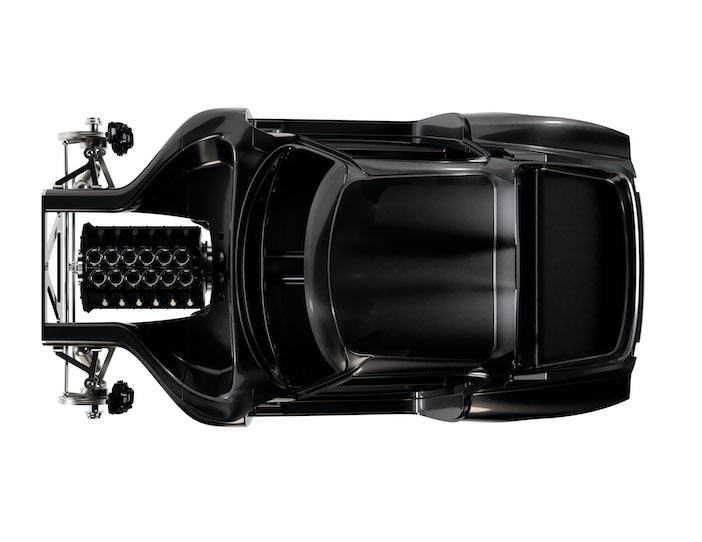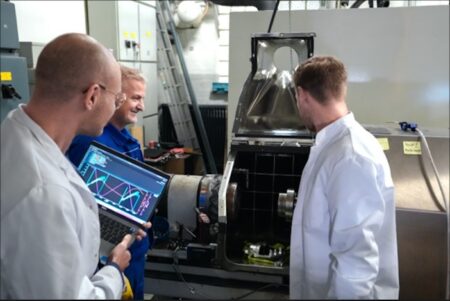GTO Engineering has revealed initial details of its all-new Squalo carbon fibre monocoque, created in conjunction with its technical partner, Dexet Technologies. The 3D renderings show how the company is striving to create a sub-1,000 kg, lightweight, driver-focused sports car.
Since Q3 2021, Dexet Technologies, a British composite design and engineering consultancy, with experience in Formula One and low-volume supercar production, has been working with GTO to create the sub-1,000 kg Squalo. Dexet says the carbon fibre monocoque chassis features construction technology only seen thus far in “the rarest of hypercars”. The underpinnings of the car do indeed belie its retro styling.
The monocoque is designed to be manufactured in three parts for ease of accessibility and maintenance. The forward section of the chassis contains the engine and transmission, while the middle tub houses the occupants and fuel cell. The third section, the rear subsection, is one of the most innovative parts, supporting the rear suspension and differential. The three chassis subassemblies are bolted together to form a rigid structure, providing precise feedback to the driver.

GTO Engineering’s in-house technical team – headed up by Alexander Aucken, chief technical officer – have been working alongside Dexet’s design, material and testing engineers, to combine their expertise and help deliver on GTO’s promise of a lightweight, two-door, narrow-packaged driver’s car homologated for major markets.
Francesco Aglietti, founder and CEO of Dexet Technologies said: “The challenge of designing and developing this chassis using such cutting-edge composite construction has been a real privilege, and it’s incredibly exciting to be a part of such a distinguished project. GTO Engineering has allowed us to put our decades’ worth of Formula One and composite engineering experience to use and has trusted us with this key structural element with the primary focus, of course, being to achieve the coveted sub-1,000kg kerb weight of Squalo. We are thrilled to finally see these plans coming to light by way of technical drawings and are looking forward to taking the next steps with the team at GTO Engineering.”

Both GTO and Dexet are now working to achieve the next milestones. Defining and freezing the ergonomics of the interior using the recently revealed 3D-printed Squalo buck is the next immediate step, which will further allow Dexet to complete the design of the central carbon fibre tub. Once all the structural parameters are set, Dexet’s engineers will analyse the full chassis and bodywork with finite element analysis (FEA) and computational fluid dynamics (CFD) software.
The Squalo is quite different to GTO Engineering’s series of Revival cars, which in part use a donor vehicle for registration and sit on a period steel-tube chassis. Squalo will be all-new and registered as a brand-new vehicle. As such, its team has been pushing technology and engineering to the limit as it approaches the vital testing of the monocoque.





